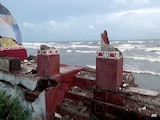In a shocking incident, a 1000-year-old burial site was found during excavations for a new hotel in Dublin, UK and around 100 skeletal remains from the Middle Ages were unearthed where a 12th-century St Mary's Abbey once stood, according to BBC. The outlet said that at least two of these skeletal remains are from the first half of the 11th century.
Beannchor, the company which is constructing its Bullitt Dublin hotel there, had ordered the excavations, as per the outlet. One of the recently discovered graves has carbon dating that is 100 years older, proving that there existed a Christian population in the area even before St Mary's Abbey was constructed. Building foundations from the 1600s were also discovered during the archaeological work at the location, which originally housed Boland's Bakery, the largest bakery in Dublin in the late 19th century.
Additionally, pieces of the "Dutch Billies" a household structure, have been discovered. It was built by immigrants in 1700 who arrived in Dublin when William of Orange assumed the throne of England, Scotland and Ireland in 1689.
The structures discovered during the assessment of the site are planned to be included in the design of the new hotel complex, while the skeletal remains will be "removed, cleaned and submitted" for more analysis before finally being transferred to the National Monuments Services of the UK.
Archaeologists also discovered the 1667-era Presbyterian Meeting House's foundations, which will serve as the base for a brand-new bar and restaurant of the hotel, which is expected to be inaugurated in 2025. Meanwhile, the Boland's Bakery will be "renovated and repurposed", as per the BBC.
Edmond O'Donovan, Director of Excavations for Courtney Derry Heritage Consultancy, described the importance of the discovery and said in a statement, "One of the things that was intriguing and exciting about the excavation is that we found an early burial or at least a number of burials that we suspect to be quite early. We have one that's carbon dated to the 11th Century and we have a second burial that was found with a diagnostic stick pin from the 11th Century." He added that St Mary's Abbey was Ireland's largest and most wealthy medieval abbey of its time.















